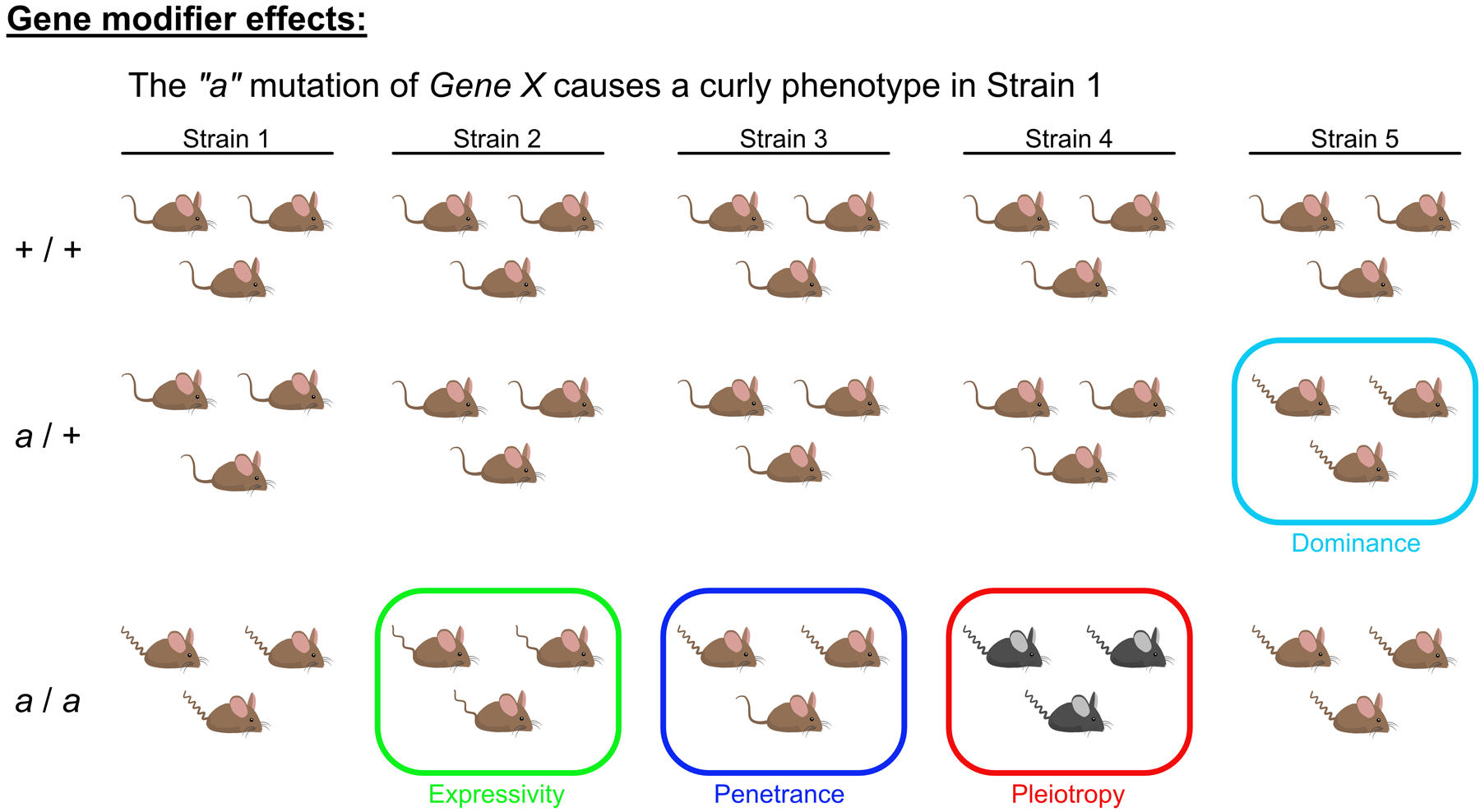Figure 2: Effects of modifier genes.

Modifier genes are those that affect the level of expression of other genes. The existence of gene modifier effects is evidenced by changes in the dominance, expressivity, penetrance and pleiotropy of a phenotype when a transgene is expressed in distinct background strains. In this example, homozygous expression of the hypothetical “a” mutation in Gene X causes a curly tail phenotype in mouse Strain 1. The “a” mutation is assessed among 4 additional strains (in columns) for wildtype (mutation null), heterozygous and mutation “a” homozygous populations (in rows). Some gene modifiers will change the dominance (cyan box) of a trait, a measure of the allele dosage needed to cause the curly tail phenotype. For example, in Strains 1–4, a single allele containing the “a” mutation is not sufficient to result in the curly tail phenotype, but in Strain 5 it is. Changes in expressivity (green box), or quantitative differences in the trait, can also be evident: while mice in Strain 2 exhibit a curly tail, there are fewer curls per length. Penetrance (blue box) refers to the proportion of mice that carry the allele (e.g. mutation “a”) that also display the curly tail phenotype; in Strain 3, only 2 out of 3 mutant homozygous mice exhibit a curly tail. Pleiotropy (red box) or the number of phenotypes generated by an allele is also indicative of gene modifiers. In Strain 4, mutant homozygous mice exhibit the curly tail phenotype, but in addition have a change in coat color that is caused by interactions between gene modifier(s) and mutation “a”.
